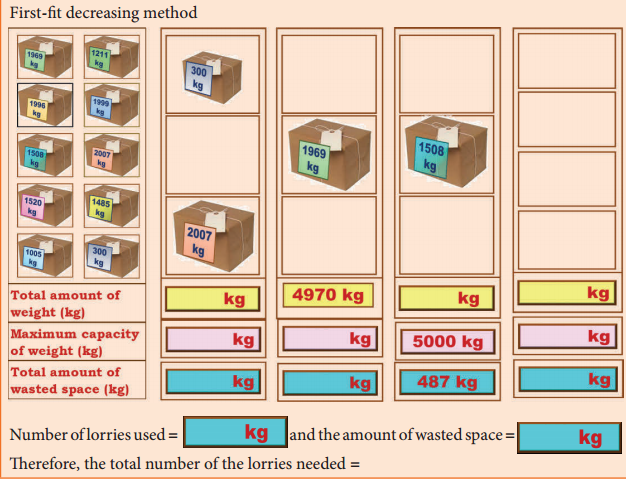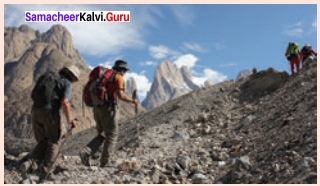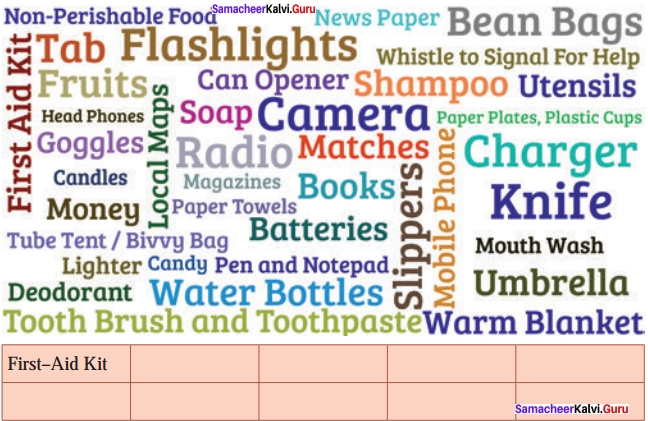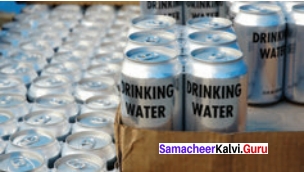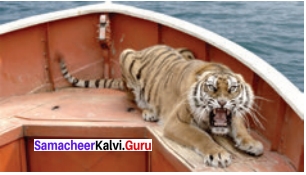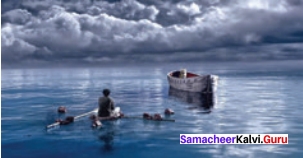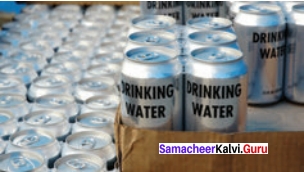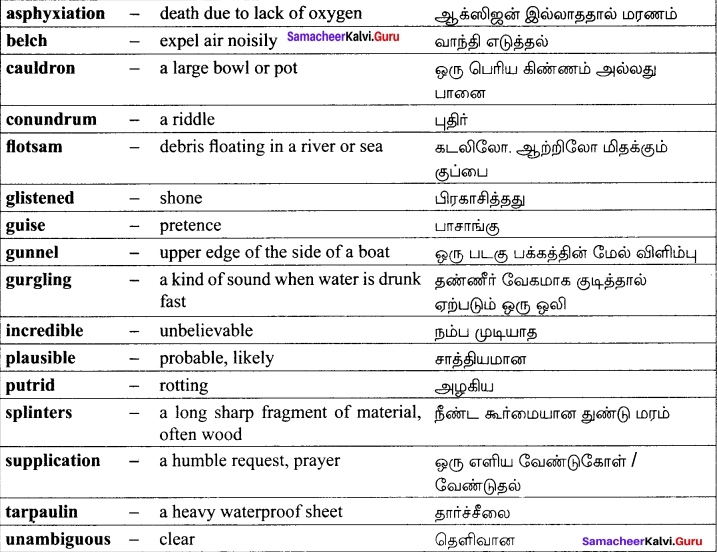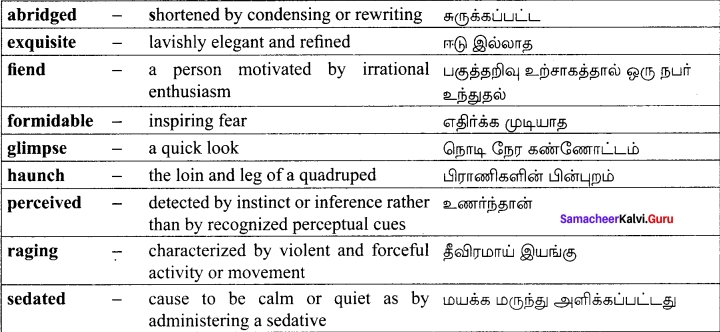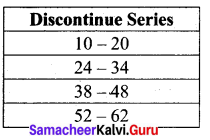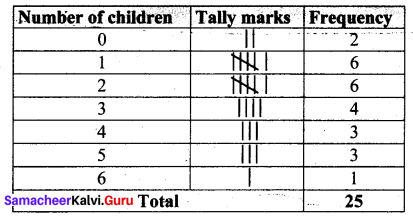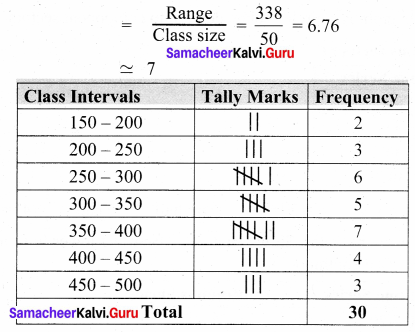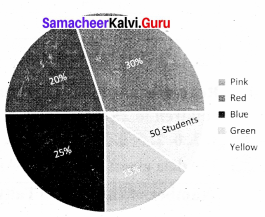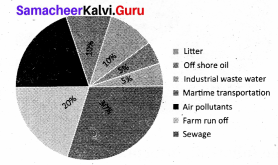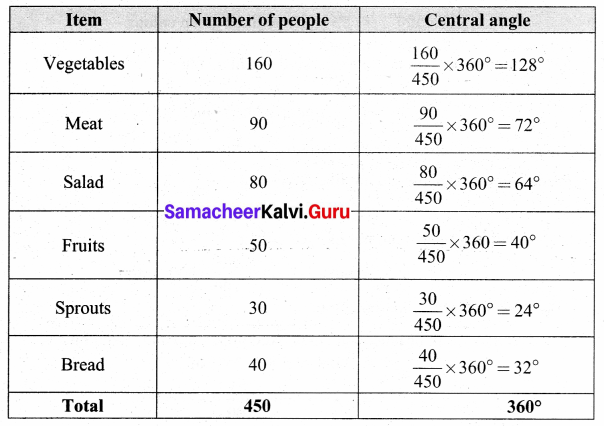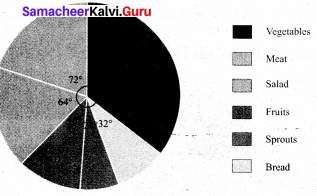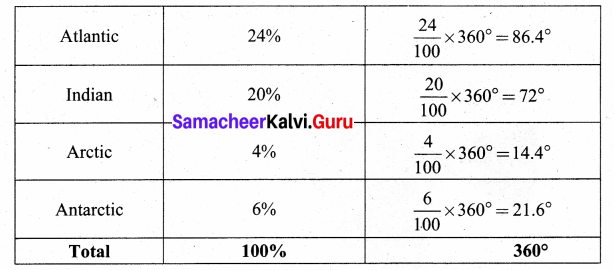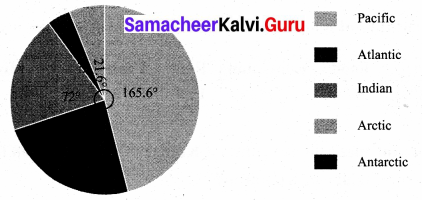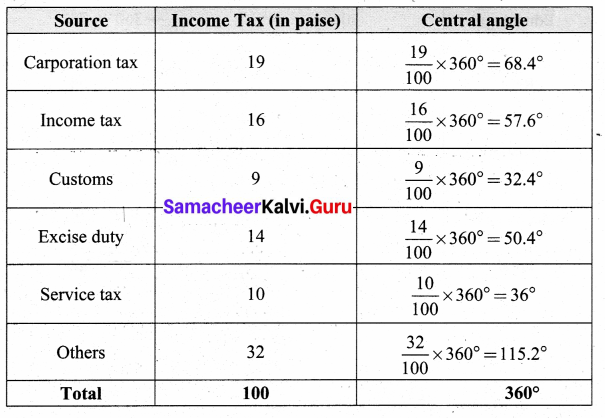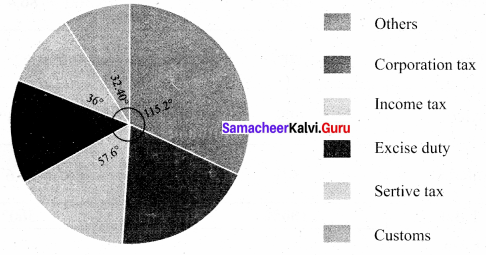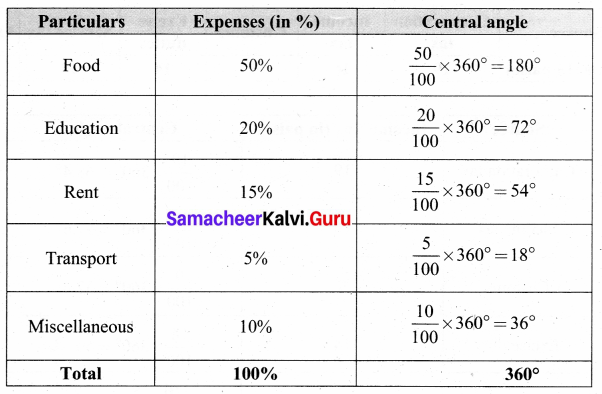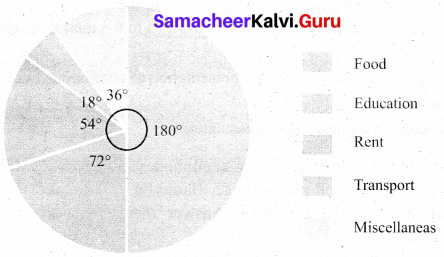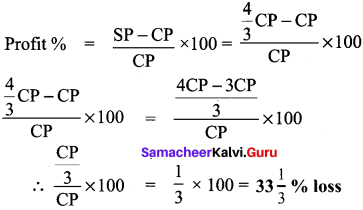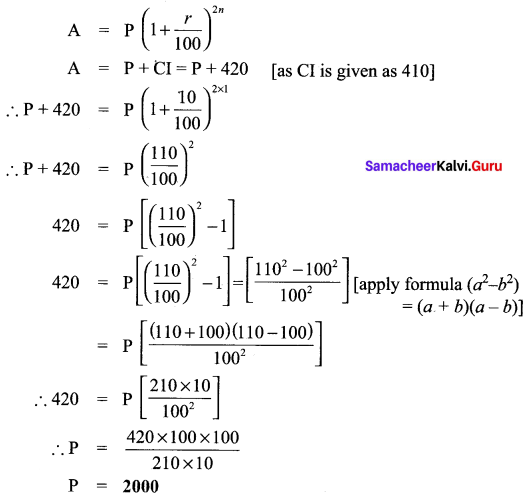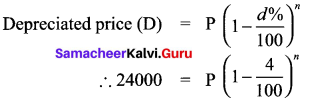Students can Download Maths Chapter 5 Information Processing Intext Questions and Answers, Notes Pdf, Samacheer Kalvi 8th Maths Book Solutions Guide Pdf helps you to revise the complete Tamilnadu State Board New Syllabus and score more marks in your examinations.
Tamilnadu Samacheer Kalvi 8th Maths Solutions Term 3 Chapter 5 Information Processing Intext Questions
Exercise 5.1
Activity 1 (Text book Page No. 104)
Question 1.
Consider that you are going to a store with your total budget of ₹ 220 to buy things without changing the quantity of the items given in the list below with the following conditions.

Conditions :
(i) First you have to complete the price list given.
(ii) You have to buy three items as per the given price list but within your budget ₹ 220.
(iii) You won’t carry exceeding 5kg because you have to walk home carrying them, so they cannot be bulky.
Now, answer the following questions:
1. In how many ways can you buy your items? Complete the price lists given below. One is done for you.
2. Which one is the best purchase price list and why?
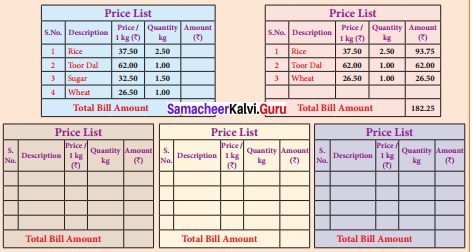
Answer:

![]()
Try this (Text book Page No. 106)
The teacher divides the class into four groups and setup a mock market in the class room and ask the students to involve in role play as two groups of businessmen and two groups of consumers. Consumers have to buy products at different shops and prepare a price list.
The two supermarkets in which the two groups buy are Star Food Mart and Super Provisions. Th is week they each have got a special deal on some products. At Star Food Mart, you can buy items at discount prices. At Super Provisions, there are some “BUY ONE GET ONE” deals. Flave a look at their deal:
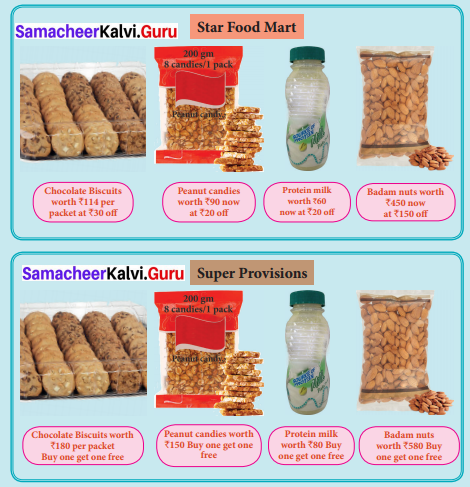
Now, answer the following questions.
I. Here is your shopping list:
4 bottles of Protein Milk (200 ml size), 2 packets of Peanut candies(200 gm), 1 packet of Chocolate biscuits and 1 packet of Badam nuts (500 gm)
(i) If you buy all the items in one shop, where will you get the best price?
(ii) If you buy the items from different shops, how will you do it to spend the least amount of money?
![]()
II. You have ₹ 1000/- to spend to buy the following shopping list:
6 bottles of Protein Milk (200 ml size), 3 packets of Peanut candies (200 gm), 3 packets of Chocolate biscuits and 1 packet of Badam nuts (250 gm).
(i) How can you do this so that you don’t go over your budget amount ₹ 1000?
(ii) Which shop offers you the best value for money on each item?
(iii) Is the “BUY ONE GET ONE” deal at Super Provisions the same as “50% off’ deal?
Solution:
Prices of Star Food Mart.
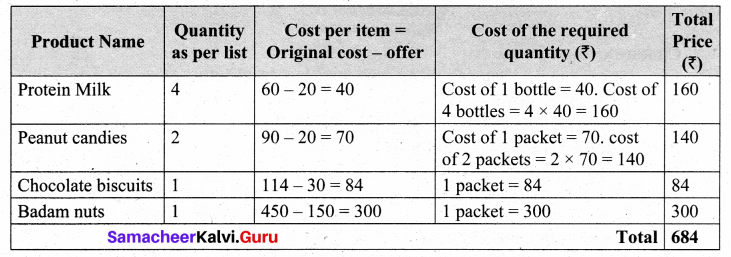
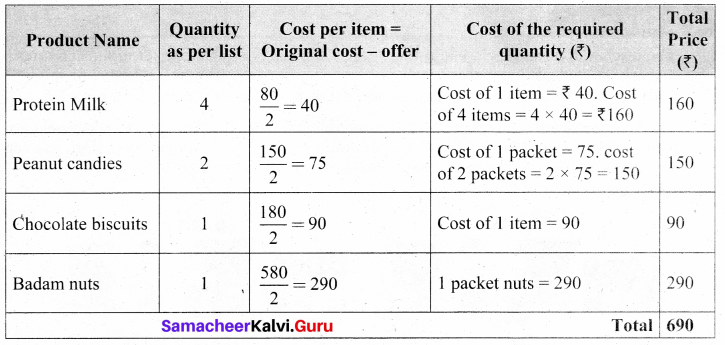
(i) In star Food Mart
(ii) Badam nuts from super provisions and other items from Star Food Mart.
II. Comparing two stores.

(i) We can buy them from any one shop.
(ii) Star Food Mart.
(iii) Yes
![]()
Exercise 5.2
Try this (Text book Page No. 117)
Question 1.
If Kumaran cut the woods using first fit method then find the wastage pieces.
Solution:
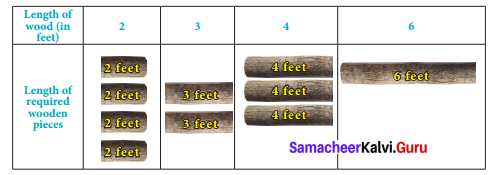
Waste pieces = 2 feet + 4 feet + 2 feet = 8 feet
![]()
Activity 1 (Text book Page No. 117)
Question 1.
Seva Sangam has decided to deliver some aids to flood victims via lorries with a maximum capacity of 5000kg. All of these items that are given below are to be packed and sent in the lorry.

Solution:

